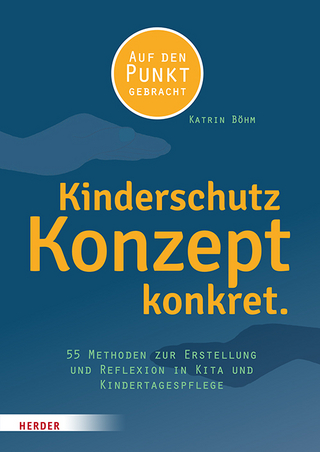
Habitats in the United States, Grade K
Routledge (Verlag)
978-1-032-57925-2 (ISBN)
What if you could challenge your kindergarten students to compare their local habitats with other habitats in the United States? With this volume in the STEM Road Map Curriculum Series, you can! Habitats in the United States outlines a journey that will steer your students toward authentic problem solving while grounding them in integrated STEM disciplines. Like the other volumes in the series, this book is designed to meet the growing need to infuse real-world learning into K–12 classrooms.
This interdisciplinary, three-lesson module uses project- and problem-based learning to help students look at their own neighborhood, city, state, and beyond to learn about the geography and habitats of various regions of the United States. Students will gather information on habitats and their similarities and differences based on weather, climate, and the animals, plants, and people residing there, to develop a reference manual for local zoo officials reorganizing their animal displays.
To support this goal, students will do the following:
Explain that there are different types of habitats in different parts of the U.S.
Explain how various habitats sustain animals and plants
Identify climatic characteristics of several habitats
Apply their knowledge of habitats to develop a reference guide about habitats in the U.S.
Utilize technology to gather research information and communicate
Identify technological advances and tools that scientists use to learn about sustainable systems
Design and construct models of habitats
Understand local weather patterns and make connections among weather patterns and plant and animal life where they live
The STEM Road Map Curriculum Series is anchored in the Next Generation Science Standards, the Common Core State Standards, and the Framework for 21st Century Learning. In-depth and flexible, Habitats in the United States can be used as a whole unit or in part to meet the needs of districts, schools, and teachers who are charting a course toward an integrated STEM approach.
Carla C. Johnson is a Professor of Science Education and Office of Research and Innovation Faculty Research Fellow at North Carolina State University, North Carolina, USA. Janet B. Walton is a Senior Research Scholar at North Carolina State University's College of Education in Raleigh, North Carolina, USA. Erin E. Peters-Burton is the Donna R. and David E. Sterling Endowed Professor in Science Education at George Mason University in Fairfax, Virginia, USA.
Part I: The STEM Road Map: Background, Theory, and Practice 1. Overview of the STEM Road Map Curriculum Series 2. Strategies Used in the STEM Road Map Curriculum Series Part II: Habitats in the US: STEM Road Map Module 3. Habitats in the US Module Overview 4. Habitats in the US Lesson Plans 5. Transforming Learning with Habitats in the US and the STEM Road Map Curriculum Series
| Erscheinungsdatum | 14.03.2024 |
|---|---|
| Reihe/Serie | STEM Road Map Curriculum Series |
| Zusatzinfo | 30 Tables, black and white; 2 Line drawings, black and white; 4 Halftones, black and white; 6 Illustrations, black and white |
| Verlagsort | London |
| Sprache | englisch |
| Maße | 210 x 280 mm |
| Gewicht | 308 g |
| Themenwelt | Schulbuch / Wörterbuch |
| Sozialwissenschaften ► Pädagogik ► Schulpädagogik / Grundschule | |
| Sozialwissenschaften ► Pädagogik ► Vorschulpädagogik | |
| ISBN-10 | 1-032-57925-0 / 1032579250 |
| ISBN-13 | 978-1-032-57925-2 / 9781032579252 |
| Zustand | Neuware |
| Informationen gemäß Produktsicherheitsverordnung (GPSR) | |
| Haben Sie eine Frage zum Produkt? |
aus dem Bereich


